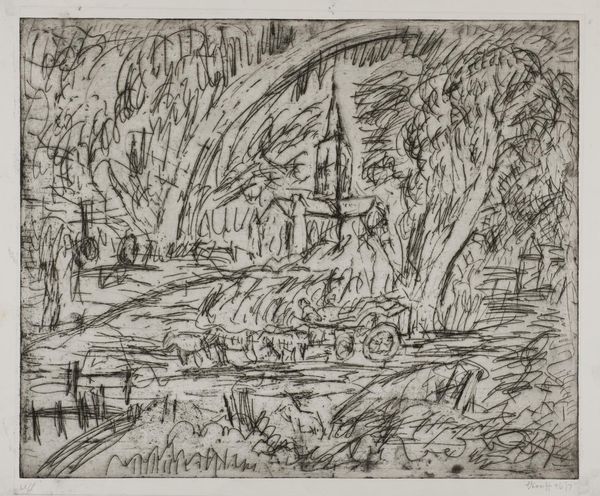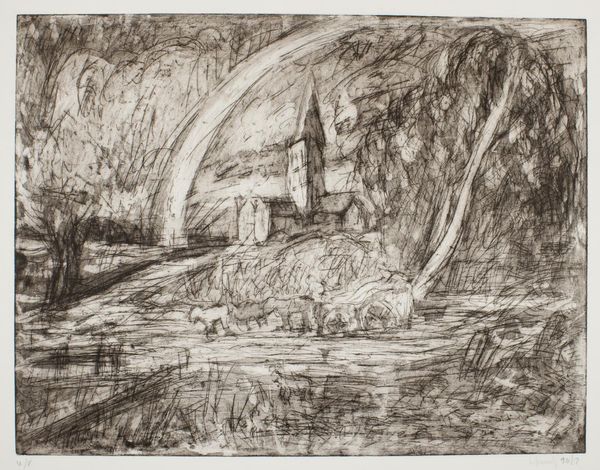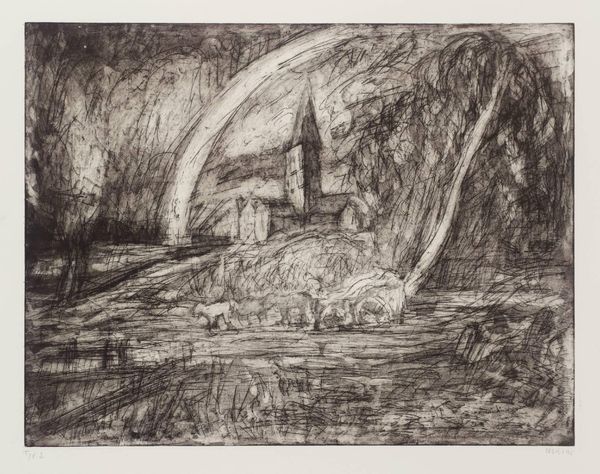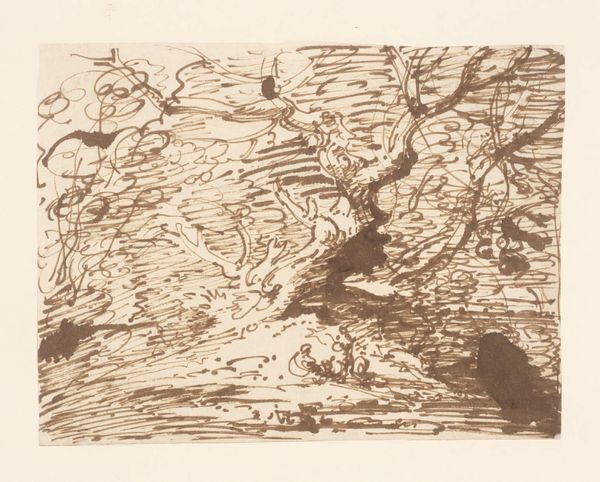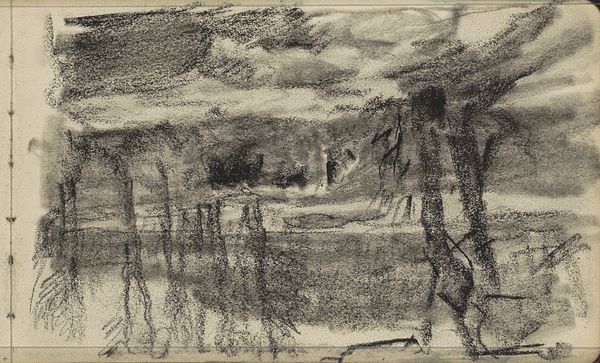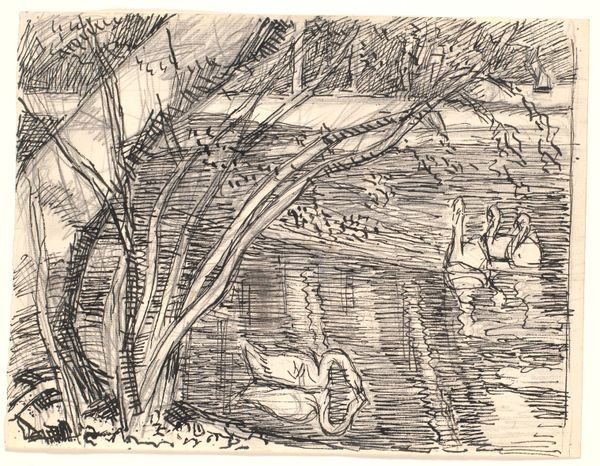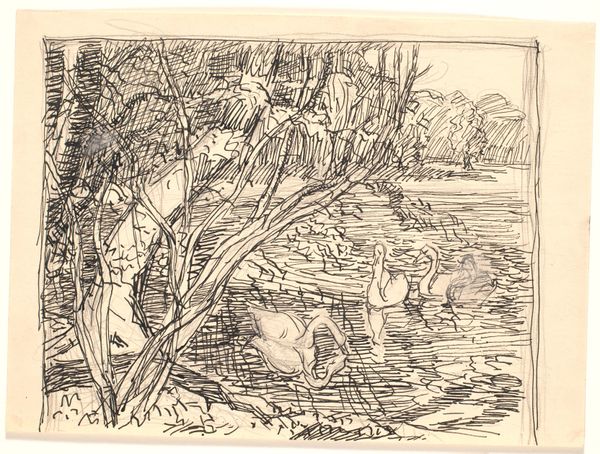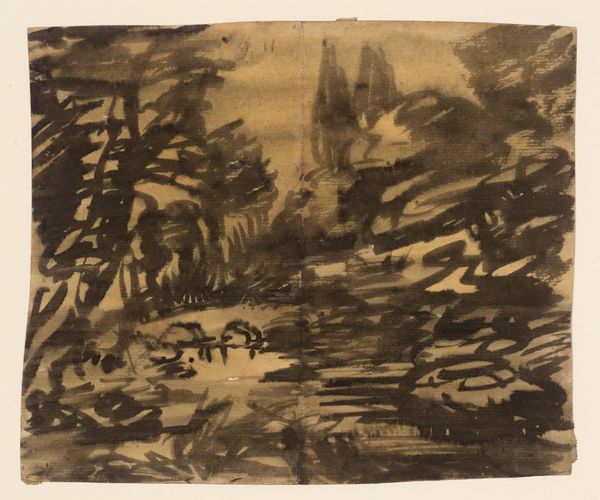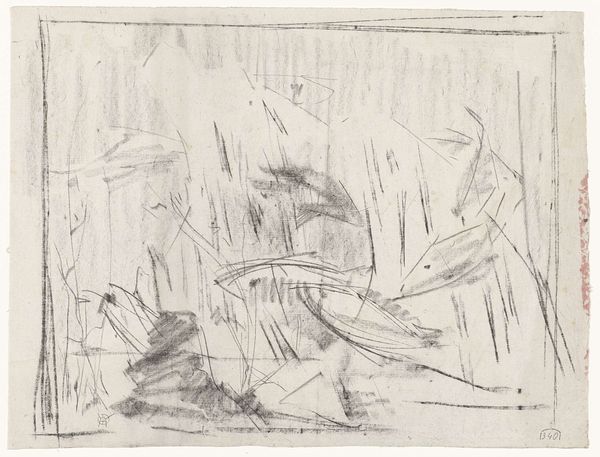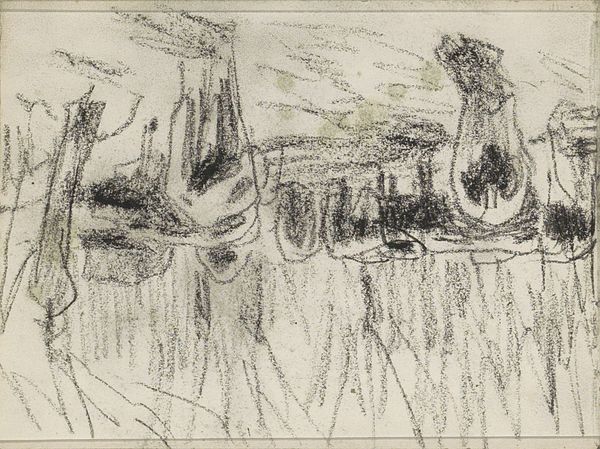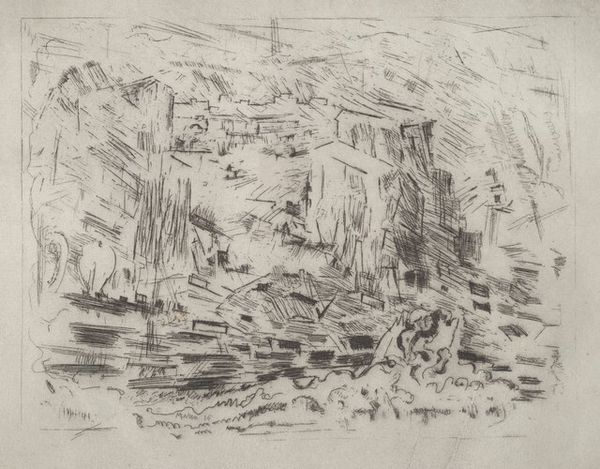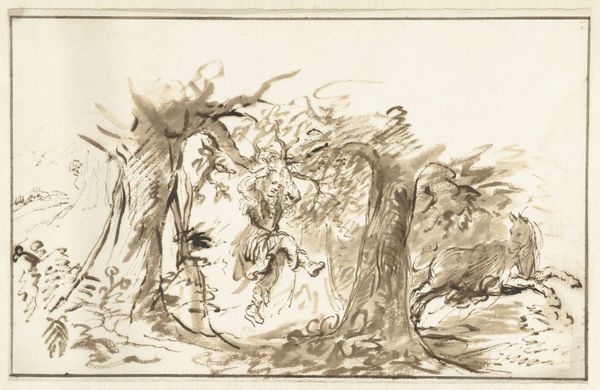
Dimensions: image: 430 x 559 mm
Copyright: © Leon Kossoff | CC-BY-NC-ND 4.0 DEED, Photo: Tate
Curator: Here we have Leon Kossoff’s etching, "Salisbury Cathedral from the Meadows (1)." Editor: It’s a storm of lines, isn’t it? Like the cathedral is emerging from a chaotic dream, or being consumed by one. Curator: Kossoff, born in 1926, used etching, a printmaking technique where acid is used to cut into a metal plate, allowing for incredibly detailed work. Editor: You can almost feel the scratching, can't you? I bet the workshop where this print was made was full of the metallic smells of acid and ink. Curator: Exactly! The materials and the process themselves become expressive, reflecting the post-war industrial landscape that formed Kossoff’s worldview. Editor: I see that. I get this sense of resilience despite the chaos. It's both beautiful and uneasy-making. Curator: Ultimately, Kossoff's Salisbury presents an engagement with both process and subject matter. Editor: For me, it's a reminder that even the most solid-seeming things are always in flux, constantly becoming and unbecoming.
Comments
tate 8 months ago
⋮
http://www.tate.org.uk/art/artworks/kossoff-salisbury-cathedral-from-the-meadows-1-p11706
Join the conversation
Join millions of artists and users on Artera today and experience the ultimate creative platform.
tate 8 months ago
⋮
This print is one of many etchings executed by Leon Kossoff in response to, and literally in the presence of, oil paintings by other artists; in this case Salisbury Cathedral from the Meadows, 1831, by John Constable (1776-1837), owned by the National Gallery, London. Tate owns two prints by Kossoff after this Constable painting (Tate P11706-7). The artist’s ability to explore a number of separate responses while making drawings and prints from a single subject is illustrated in these etchings. This print was never published as an edition; Tate owns the only trial proof.
